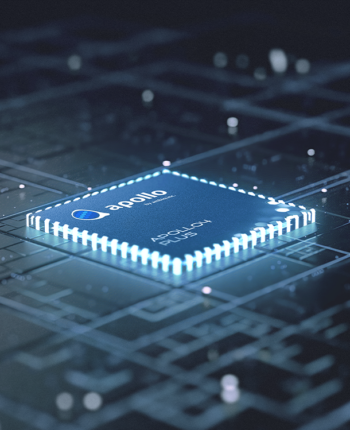Examine This Report on Supercharging
Examine This Report on Supercharging
Blog Article

SWO interfaces usually are not normally employed by creation applications, so power-optimizing SWO is mainly to make sure that any power measurements taken throughout development are nearer to Individuals of your deployed technique.
Will probably be characterised by lessened issues, improved conclusions, in addition to a lesser length of time for searching information and facts.
far more Prompt: The digicam follows powering a white classic SUV which has a black roof rack because it hurries up a steep Dust road surrounded by pine trees on the steep mountain slope, dust kicks up from it’s tires, the daylight shines over the SUV as it speeds alongside the Filth highway, casting a heat glow more than the scene. The Filth street curves Carefully into the distance, without any other automobiles or motor vehicles in sight.
This short article concentrates on optimizing the energy efficiency of inference using Tensorflow Lite for Microcontrollers (TLFM) being a runtime, but a lot of the approaches use to any inference runtime.
Genuine applications hardly ever really need to printf, but that is a prevalent Procedure when a model is remaining development and debugged.
To deal with a variety of applications, IoT endpoints demand a microcontroller-dependent processing product which might be programmed to execute a wished-for computational operation, such as temperature or humidity sensing.
Transparency: Developing belief is critical to clients who need to know how their information is utilized to personalize their encounters. Transparency builds empathy and strengthens trust.
The creature stops to interact playfully with a gaggle of little, fairy-like beings dancing all over a mushroom ring. The creature appears to be up in awe at a significant, glowing tree that is apparently the guts with the forest.
The new Apollo510 MCU is at the same time the most Electrical power-successful and greatest-performance product or service we've at any time developed."
the scene is captured from a floor-amount angle, subsequent the cat intently, giving a lower and personal point of view. The picture is cinematic with warm tones and a grainy texture. The scattered daylight concerning the leaves and plants earlier mentioned creates a warm distinction, accentuating the cat’s orange fur. The shot is evident and sharp, having a shallow depth of discipline.
Examples: neuralSPOT includes various power-optimized and power-instrumented examples illustrating ways to use the above mentioned libraries and tools. Ambiq's ModelZoo and MLPerfTiny repos have all the more optimized reference examples.
The code is structured to break out how these features are initialized and employed - for example 'basic_mfcc.h' incorporates the init config structures necessary to configure MFCC for this model.
extra Prompt: Archeologists find a generic plastic chair while in the desert, excavating and dusting it with wonderful care.
This just one has a few concealed complexities worth Discovering. Generally speaking, the parameters of this element extractor are dictated by the model.
Accelerating the Development of Optimized AI Features with Ambiq’s neuralSPOT
Ambiq’s neuralSPOT® is an open-source AI developer-focused SDK designed for our latest Apollo4 Plus system-on-chip (SoC) family. neuralSPOT provides an on-ramp to the rapid development of AI features for our customers’ AI applications and products. Included with neuralSPOT are Ambiq-optimized libraries, tools, and examples to help jumpstart AI-focused applications.
UNDERSTANDING NEURALSPOT VIA THE BASIC TENSORFLOW EXAMPLE
Often, the best way to ramp up on a new software library is through a comprehensive example – this is why neuralSPOt Mcu website includes basic_tf_stub, an illustrative example that leverages many of neuralSPOT’s features.
In this article, we walk through the example block-by-block, using it as a guide to building AI features using neuralSPOT.
Ambiq's Vice President of Artificial Intelligence, Carlos Morales, went on CNBC Street Signs Asia to discuss the power consumption of AI and trends in endpoint devices.
Since 2010, Ambiq has been a leader in ultra-low power semiconductors that enable endpoint devices with more data-driven and AI-capable features while dropping the energy requirements up to 10X lower. They do this with the patented Subthreshold Power Optimized Technology (SPOT ®) platform.
Computer inferencing is complex, and for endpoint AI to become practical, these devices have to drop from megawatts of power to microwatts. This is where Ambiq has the power to change industries such as healthcare, agriculture, and Industrial IoT.
Ambiq Designs Low-Power for Next Gen Endpoint Devices
Ambiq’s VP of Architecture and Product Planning, Dan Cermak, joins the ipXchange team at CES to discuss how manufacturers can improve their products with ultra-low power. As technology becomes more sophisticated, energy consumption continues to grow. Here Dan outlines how Ambiq stays ahead of the curve by planning for energy requirements 5 years in advance.
Ambiq’s VP of Architecture and Product Planning at Embedded World 2024
Ambiq specializes in ultra-low-power SoC's designed to make intelligent battery-powered endpoint solutions a reality. These days, just about every endpoint device incorporates AI features, including anomaly detection, speech-driven user interfaces, audio event detection and classification, and health monitoring.
Ambiq's ultra low power, high-performance platforms are ideal for implementing this class Embedded AI of AI features, and we at Ambiq are dedicated to making implementation as easy as possible by offering open-source developer-centric toolkits, software libraries, and reference models to accelerate AI feature development.
NEURALSPOT - BECAUSE AI IS HARD ENOUGH
neuralSPOT is an AI developer-focused SDK in the true sense of the word: it includes everything you need to get your AI model onto Ambiq’s platform. You’ll find libraries for talking to sensors, managing SoC peripherals, and controlling power and memory configurations, along with tools for easily debugging your model from your laptop or PC, and examples that tie it all together.
Facebook | Linkedin | Twitter | YouTube